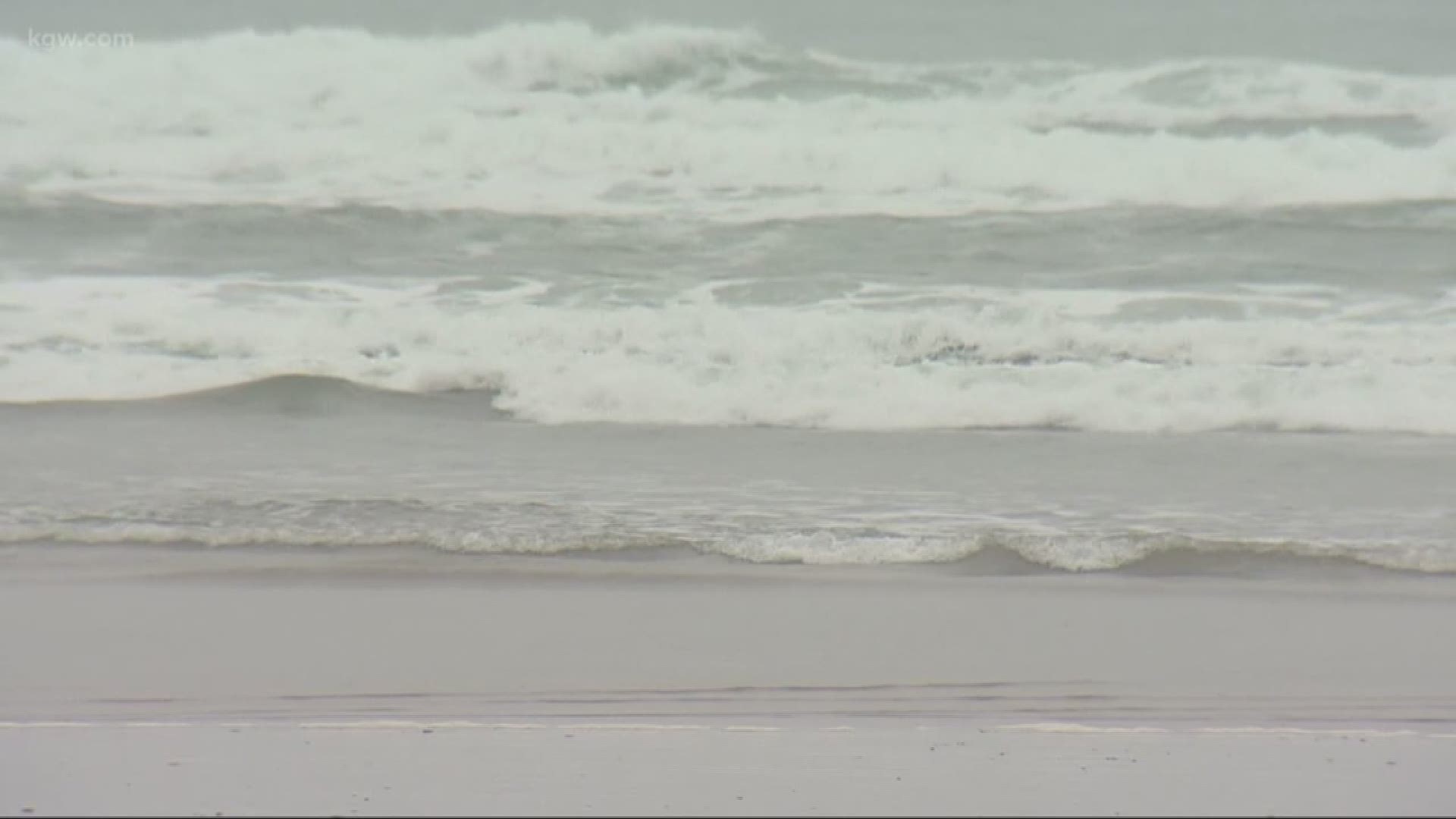PORTLAND, Ore. — There's an increased risk of sneaker waves along the Oregon coast on Tuesday, according to the National Weather Service.
They're called sneaker waves because they appear without warning, are impossible to predict, and often surge high up on the beach with deadly force.
Sneaker waves can knock a person off their feet and sweep them out into the ocean. They can also lift large logs and rocks and bring them down on people.
"At any time, a larger wave could come in and knock you down. I've seen people get knocked down and swept out," said Nehalem Fire and Rescue Chief Perry Sherbaugh. "If you're anywhere near a log, it only takes a few inches of water to cause that log to start moving and rolling about in the surf."
RELATED VIDEO: Sneaker wave at Cannon Beach
In March, after a woman was crushed by a log that was lifted by a sneaker wave at Manzanita Beach, officials issued a familiar warning: "Never turn your back on the ocean."
The ocean is strong enough to pick up even the biggest log and toss it on top of a person. Some logs may looks small, but even the tiny ones can be water-logged and weigh tons, according to Oregon Parks and Recreation.
Here are some tips to keep yourself safe from sneaker waves:
- Always keep an eye on the ocean
- Never turn your back on the ocean
- Stay off rocks or logs along the surf or near the water
- If you see someone get dragged in by a sneaker wave, STAY BACK, and call 911
Here are some other tips from Oregon Parks and Recreation to stay safe on the coast:
RIP CURRENTS
Rip currents are strong currents of water that rush out to sea. They are stronger than even the best swimmer. These currents can swiftly sweep unwary beachcombers and waders off their feet and out to sea. Rip currents may appear as dark, choppy water. Any time you see debris and foam floating out to sea, chances are you have found a rip current. Avoid the area.
How to play it safe: Parents keep your kids close when playing in the ocean. If caught in a rip current, don't panic. Swim parallel to the beach until you are out of the current, then head for the beach.
KNOW THE TIDES
Incoming tides isolate rocks from headlands and the shore. Avoid the temptation of strolling out to an interesting rock without knowing when the tide rolls back in. Free tide tables are readily available at state park offices, information centers and many shops and motels.
How to play it safe: Stay off rocks and small, enclosed beaches. Know when the tide is coming in by visiting the tide table website at the Hatfield Marine Science Center.
HIGH WAVES CAN REACH YOU
Tides and waves can sweep over rocks, jetties and headlands, knocking you off and carrying you out to sea.
How to play it safe: Assume nothing is "high enough" and avoid exposed rocks, jetties and headlands during strong wave action (like during and after storms).
BEWARE OF HIGH, STEEP CLIFFS
Assume that all cliff edges are unstable. Wet trails or soft sand and earth can make for unstable footing. Rocks can be slippery even when it isn’t raining.
How to play it safe: Make sure you wear proper footwear and stick to the trails. Stay behind guard fences and railings, and don´t get too close to the edge.
HEADS UP
Standing at the base of an ocean-side cliff can be dangerous, especially if it has an overhang. In some places, winter storms and high waves have eroded the shoreline, increasing the chance of collapse and slides.
How to play it safe: Beware of falling rocks, and don´t climb on bluffs and eroding hillsides. Don´t walk along the base of cliffs unless absolutely necessary.

